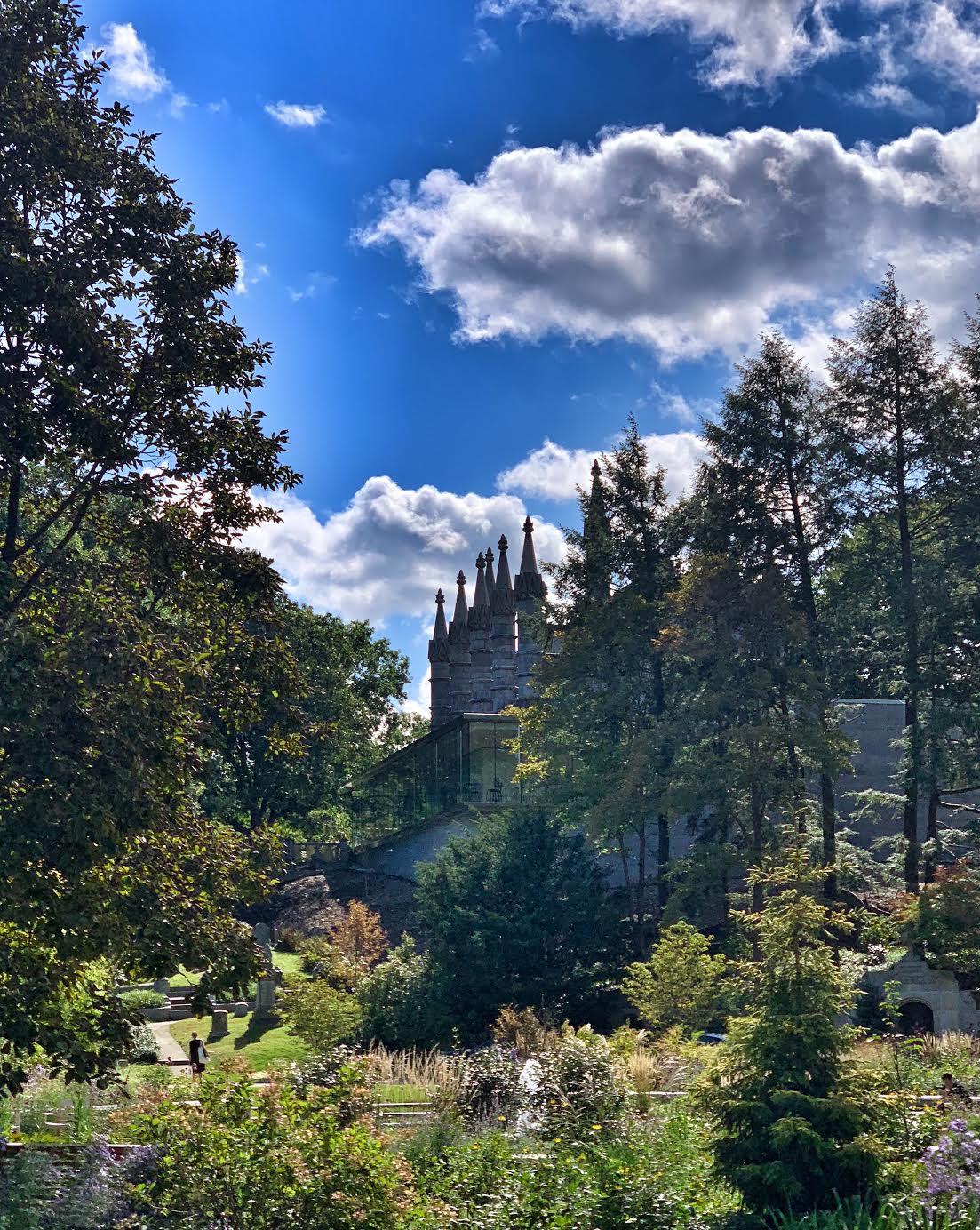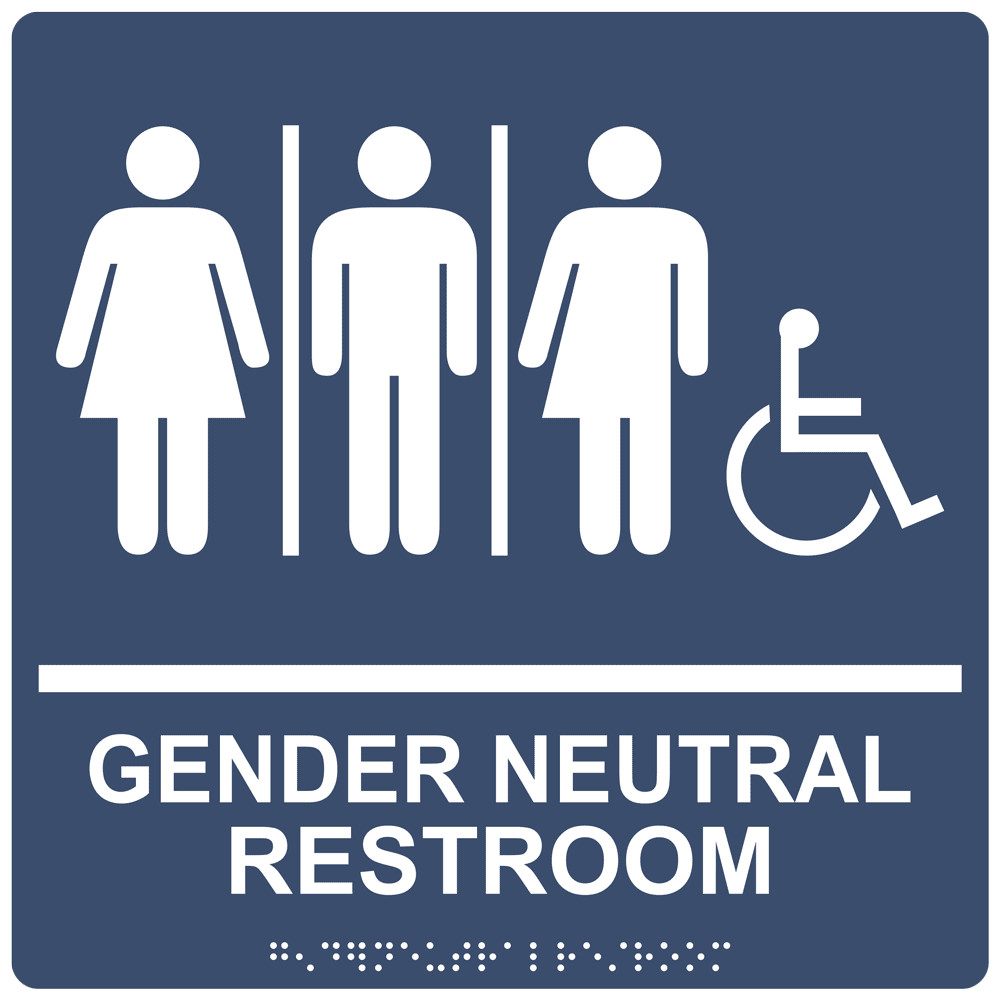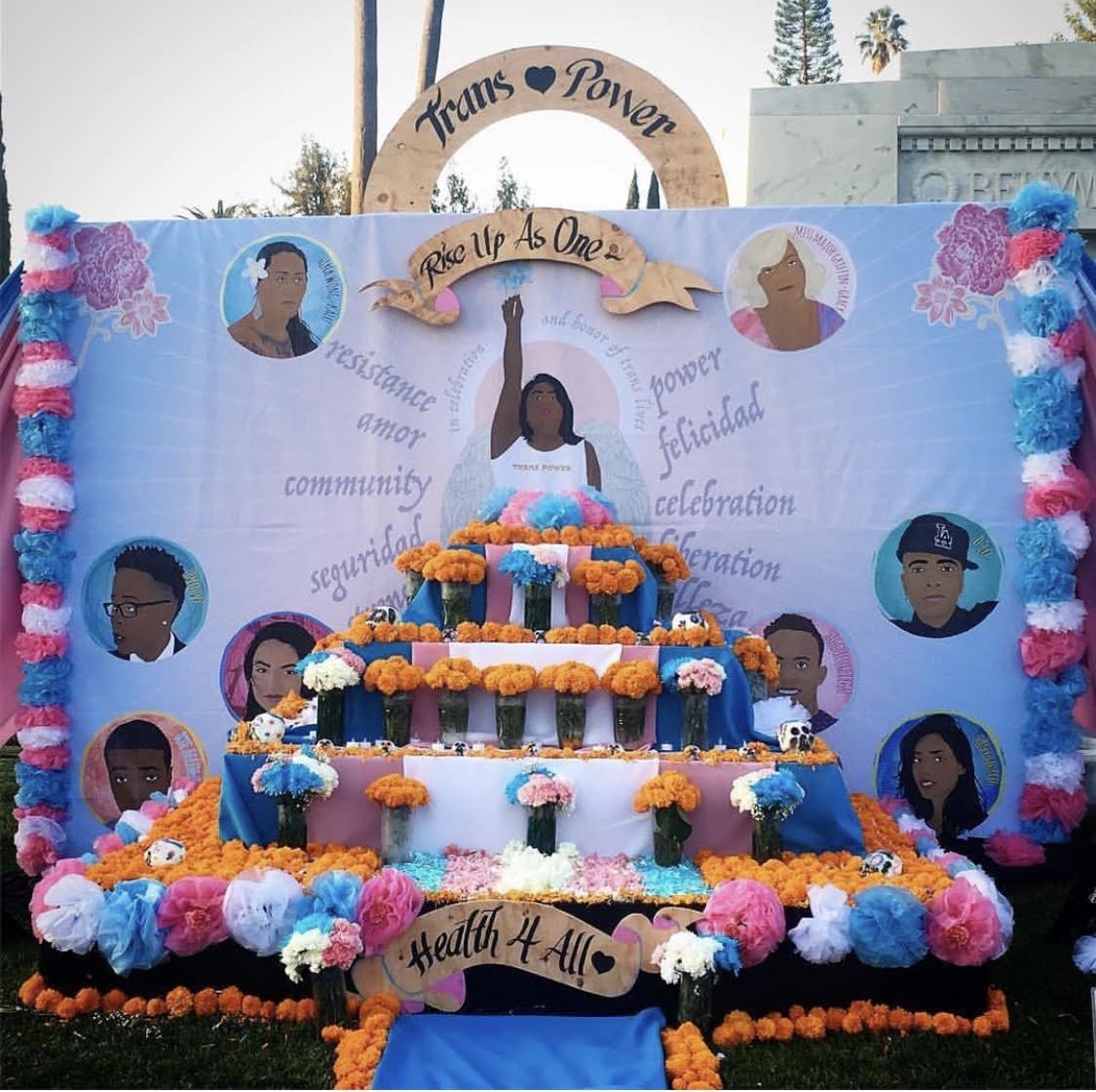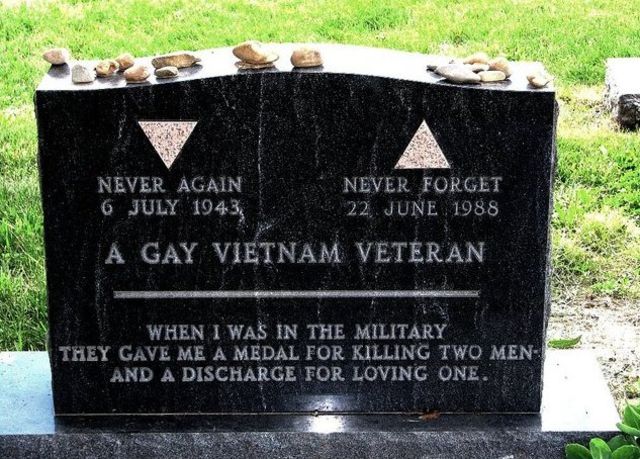A lot of people say “We’re all equal in death” but the fact is, the disparities we experience in life often follow us into death (1). Transgender and gender expansive individuals carry the burden of questions about death that are often unique to their identities. A tenet of the Death Positive movement is about ensuring that each individual’s end of life wishes are honored regardless of gender, racial, sexual, or cultural identity. Just as trans rights are human rights, so must our rights in death extend to us all.
In an effort to help to allay some fears, provide you with information to better protect yourselves, and inspire those in death care to do everything they can to protect the dignity and final wishes of all their clients, I turned to Toni-King Rose, a mortuary science student who founded Trans Death Care, an advocacy organization for transgender rights in death care services, that also provides support for trans people working in death care. Rose asked trans and non-binary colleagues and friends in the U.S. what their biggest end-of-life and death worries, concerns and questions were, and sent them on to me. For answers, I put my years of research skills as a museum curator and historian to work, and consulted numerous experts like lawyers, advocates, and funeral professionals.
How does one ensure their partner is power of attorney and executor of their will?
If married, a partner is recognized as the primary next of kin and all decision making will automatically fall to them. If this is not the case, then you will need to create and designate:
- An Advance Directive – A document that outlines what your wishes for end of life care.
- Designate a Health Care Proxy – Selecting a trusted person who can make decisions on your behalf.
- Assign a Funeral Agent – The person entrusted with carrying out what you want done with your body and your funeral wishes.
I know that may sound overwhelming, but I promise you, it can be done, and The Order is here to help! We’ve partnered with Cake, to make this as accessible and simple for you as possible. Just click here to go to our resource page which explains all the steps. Then, when you’re ready, click on this link over on the Cake website to find your state and all the documents you will need.

Can you have a different name on your grave marker than your legal name if you haven’t legally been able to change it yet?
Many cemeteries in the U.S. are privately owned, which means they can make and set their own policies known as Cemetery Rules and Regulations- these are usually more concerned with size, type, and material of the headstone or grave marker than names. By and large this should not be an issue with most cemeteries, as people commonly use nicknames on their markers. Graveyards, or burial grounds associated with a religious organization or church, also have their own rules and regulations and may prove much trickier to navigate. When possible, ask the cemetery for a copy of their Rules and Regulations and be sure to ask questions if you are unclear.
Curious as to how a historic cemetery would handle this, I spoke to Corinne E. Elicone at Mount Auburn Cemetery in Boston, “If we had a trans/non-binary person come in to buy a plot from us, we would assure them that their dead name is not required to be on the stone if they haven’t changed their name legally.” Elicone added an important caveat to this, that whatever cemetery serves as your final resting place, their records will bear whatever name is on your official death certificate. “Meaning, if you were trying to search for someone and you came into our office to look at our records, you would find that the paperwork has the legal name of the person buried from their death certificate, even though their headstone might read differently.”
Can honorably discharged LGBTQ veterans be buried with a veteran ceremony and cemetery?
Yes. According to the U.S. Department of Veterans Affairs, LBGT veterans are eligible for funeral and burial benefits. These can be arranged through a funeral home if you choose to use one. Some states, like New York and Rhode Island recently passed laws to restore burial and other benefits to LGBTQ vets who were dishonorably discharged for their gender identity or sexual orientation.
Ezra Salter, a Funeral Director and Embalmer based in New Orleans says, “I have never had a military organization inquire about the sexual orientation of a veteran, and I would consider it incredibly inappropriate if they tried to do so.” Salter explains the common process for funeral homes, “We submit a request with documentation proving the veteran was honorably discharged (usually the DD2-14 form) and the military branch calls to confirm and sends a team out the day of the service. In my experience, they do not ever reach out to the family or look into the personal history of the veteran beyond confirming that they were discharged honorably and have not committed a capital crime.”
The process for acquiring space in a veteran cemetery is similar, but often requires the family of the decedent to sign papers. “I do not think the military would deny honors or a burial plot to a qualifying honorably discharged veteran regardless of gender identity, but the funeral director may need to submit additional documentation showing a proof of name change, so that the military can verify that the deceased person is the same person listed on the DD2-14,” said Salter.
As for spousal benefits, the VA will honor any same sex marriage even if the license and marriage was performed outside the veteran’s state of residence. There are also a number of benefits, like life insurance, or presentation of the flag, that service members can designate beneficiaries for “regardless of sexual orientation.” For more details on these visit the VA’s Benefits and Healthcare section.
Do any LGBTQ cemeteries exist (like ie. African American, veteran, catholic etc)?
You might be familiar with the headstone of veteran and activist Leonard “Mat” Matlovich, which does not bear his name but the following epitaph, “A Gay Vietnam Veteran. When I was in the military they gave me a medal for killing two men and a discharge for loving one.”
It sits in the historic Congressional Cemetery in Washington D.C., and was the catalyst for what is believed to be the only dedicated LGBTQ section in a cemetery, referred to as the “Gay Corner.” Visitors to the cemetery, which was one of only a few cemeteries to accept AIDS victims in the 1980s, can take a self guided tour of other notable LGBTQ persons interred there.
More recently in 2008, an LGBTQ rights organization in Denmark acquired 36 spots in Assistens, a cemetery in Cophenhagen, and in 2014 the very first cemetery exclusively for lesbians opened in Berlin. The Berlin cemetery was purchased by members of Safia, an organization for older lesbians who wanted to remain together, even in death. According to Safia member Astrid Osterland, “Death is a part of life; it’s about learning to live with it and accepting this. Lots of us don’t have families to be buried with. Instead, we want to lie with those we’ve fought alongside, loved, and lived with.”
A number of cemeteries and organizations like Queerly Departed, host historical tours of graves of notable LGBTQ persons, and the website Find a Grave features a virtual cemetery called Over the Rainbow, “dedicated to the memory of Lesbian, Gay, Bisexual, and Transgender person who have touched our lives.”
Can I have a lawyer release my own pre-written obituary instead of relying on family/next of kin?
You can have a lawyer, a designated agent, or a trusted friend publish an obituary for you. One option many people find empowering is writing their own obituary or even creating their own memorial video. In some cities you can attend obituary writing workshops, like the one led by Sarah Farr of Death Positive DC.
Writing your own obituary not only gives you some control over your life’s narrative and identity, but others who have done it state that the experience was not only positive and therapeutic for them, but it can also be a thoughtful form of caregiving we can provide our loved ones. Here’s a bit more about the benefits and considerations on writing your own obit, from this 2018 article that ran in the NY Times, Write Your Own Obit.
Can you change the gender of someone on their death certificate if their ID hasn’t been changed but it was intended?
Unfortunately, the answer to this question is complicated to say the least. First, I consulted Emily Albrecht, an attorney in Seattle, WA who focuses on funeral industry law and mortuary litigation. She said, “The best answer I can give you would be: maybe, but probably not. Especially if the issue is contested by next of kin. Unless, for example, their birth certificate had already been changed. Which is another reason why it is so important for folks to plan ahead and take care of making these types of “official” changes sooner rather than later. And that is assuming they are even able to make those changes in the first place, again depending on each state’s requirements. Check out this website, The National Center For Transgender Equality. It has a drop down list with the requirements for gender changes on state and federal official documents. In those states where someone does not meet the requirements to change official documents, it is crucial to have something in writing with specific instructions as to how gender identity is to be addressed upon one’s death.”
Some states have passed legislation to protect gender identity in death , including California, New York, New Jersey, and DC, but Albrecht says, “They are going to require some formal documentation like a driver’s license or birth certificate. That said, since January 2020, the New York City Health Department has started guiding providers’ work with a decedent’s loved ones to make every possible attempt to record a gender identity on death certificates consistent with the wishes of the decedent. The determination may be based on knowledge of the person or documentation including, but not limited to: an amended birth certificate indicating different sex than sex assigned at birth; a statement from the decedent during life requesting a change of birth certificate to different from sex assigned at birth; and medical records indicating self-identification as gender identity differing than sex assigned at birth, as well as other records. Hopefully other states will follow suit.”
What happens if the state you died in does not recognize your identity as valid ie (x gender marker)?
According to Salter, “If you were born, lived, and died in a state that does not allow your gender marker to be changed then unfortunately all legal documentation such as death certificates and insurance paperwork would have to comply with what the state expects. This may be complicated if you were able to update your gender marker in one state, but die in a different state that does not recognize it. If I were presented with a case like this I would research state laws and would probably need to make some calls to our legal team to get a clear answer. However, regardless of state, a person can be memorialized in any way they want. This means that the next of kin should expect the funeral home to use the decedent’s correct name and pronouns when speaking about them, in the obituary, on a grave marker, or any other form of memorialization, regardless of what is listed on legal documentation. Next of kin should make their expectations very clear to whomever they are working with at the funeral home and shouldn’t be afraid to speak up if their wishes are not being respected.”
Joe’l Anthony, Atlanta based Funeral Director and host of the YouTube series The Grave Woman related her experience: “I have witnessed this become an issue only once. A male born decedent who identified as female was issued a life insurance policy as a female and had no affidavit in place. When arrangements were made, and the vital information was collected from the family, the death certificate was issued, reflecting male as the decedent’s gender, as stated on the birth certificate. This caused problems with the release of the life insurance benefit being paid to the beneficiary. The family had to pay out of pocket for funeral expenses while fighting the insurance company to release funds. I don’t know if they ever received the death benefit.”
What are funeral homes doing right now to be inclusive?
A couple years ago we published an article that sought to answer the question “What is it like to die, queer, in 2018?” – what I’ve learned form funeral professionals is that not much has changed in the past couple years. “I am not sure exactly what funeral homes are doing to be inclusive,” Anthony told me. “At the firm I work with, everyone who comes through the door is treated with the same level of respect. Regardless of their orientation or gender presentation, we do our best to genuinely care for everyone (dead or alive). Many of the issues that arise surrounding gender tend to stem from the family’s desire to have the final say on how the deceased is presented for viewing. Lack of preplanning contracts makes things more complicated and less likely that the decedent has the final say in how they are presented.”
One of the issues that comes up frequently among both my colleagues and the genderqueer community is do funeral homes have policies or offer training that protect their gender nonconforming decedents? “I have yet to receive any formal training or education on working with the families of transgender, non-binary, or any other gender or orientation in the funeral home,” Anthony continued. “One suggestion that I would make to funeral homeowners is the implementation of zero-tolerance policies and mandatory sensitivity training for employees. The goal of the training would be to educate funeral professionals to use proper pronouns, language, and terminology as well as prepare them for varying anatomical presentations of the deceased. The zero-tolerance policies would guarantee disciplinary action against any employee who intentionally disrespects or uses derogatory language towards the dead or any guest or patron of the funeral home who is transgender, non-binary, or other.”

Are funeral homes willing to put in gender neutral or trans welcoming bathroom signage to help feel more inclusive?
Both funeral directors said that a lot of the “willingness” comes down to the region. “Management in more conservative areas will probably give a staff member some push back if they suggested inclusive signage, where funeral homes in more liberal areas may think this is a great idea,” said Salter. “Most funeral homes do however have at least one gender-neutral handicap accessible bathroom, so there is an option if people don’t feel comfortable in a gendered multi-stall restroom.” In Atlanta, Anthony stated that “I have not seen gender-neutral signage at any of the local funeral homes that I have visited recently, but that does not mean that having that signage is not an option. As professionals offering services to the public, I would assume that owners would want community members and patrons to feel as comfortable and included as possible, but being that gender-neutral signage is not legally required, it would be up to the discretion of owners.”
Are there any records of queer history related to death?
Yes! In addition to the numerous cemeteries offering historical tours of LGBTQ figures, academics and historians have been focusing on death and mourning from a queer experience more and more of late, from universities offering a Queer Necropolitics course, to the very first International Queer Death Studies Conference in 2019.
Want to dive into queer death studies but don‘t know where to begin? A great place to start is the Queer Death Studies Network. After that, head over to the Collective for Radical Death Studies. My colleagues here have created a canon of source materials with a section dedicated to Queer Death where you’ll find books, articles, films and more.

What resources are out there for LGBTQ death are besides Trans Death Care?
From grief, to end-of-life care for patients and professionals, to LGBTQ friendly funeral home directories, there are resources available. In the future we hope to see many more, but here’s a small list to get you started:
LGBTQ Friendly Funeral Home Directory can be found on GayPages.com
National Center For Lesbian Rights has put together information to help you protect yourself and your loved ones in the event of illness, disability, or death.
SAGE is an advocacy and services organization for LGBT elders, that addresses a variety of issues. Here, you can find a list of hospices that have received training on issues related to the LGBT community.
Need to locate service providers who understand LGBT issues and can be trusted to provide you with competent, respectful care? SAGE has created these 10 tips to help you find a provider that’s right for you or your loved one.
The National Resource Center on LGBT Aging has a wealth of information, resources and support. You can find sections on everything from end of life decisions, to considerations for Transgender people and aging, to culturally competent caregiving.
Support for LGBTQ Parents help and support for those navigating child/baby loss, miscarriage and more.
TransLifeline and The Trevor Project have been providing crisis and suicide prevention support for years. With constant attacks on Trans rights these services are crucial, as we know that “Playing politics with the civil rights of a vulnerable population has consequences,” – Sam Ames, director of Trans Lifeline.
For caregiving professionals who want to learn more and make sure they are providing the best care possible to all their patients, make a point of requesting training at your workplace. I also recommend Dr. Kimberly D. Acquaviva’a book, LGBTQ-Inclusive Hospice and Palliative Care: A Practical Guide to Transforming Professional Practice, which is for physicians, advanced practice registered nurses, registered nurses, social workers, counselors, and chaplains.
Another consideration is organizing community death care. Here at The Order we’ve always been passionate advocates for biological and chosen families to take on the care of their loved ones in death, if they choose to do so. Washing and dressing the body, and holding space for your community in a way that not only feels safe for everyone but is also meaningful to you, can provide a powerful space for mourning, support, and healing.
Perhaps you or someone you know is willing to learn how to care for a body and be available to answer questions, provide hands-on help, and support others in your community? There are plenty of free resources online at the National Home Funeral Alliance, or enroll in a distance learning program with one of our wonderful colleagues, like Alua Arthur.
As a community that is too often burdened with grief it can also be comforting to come together for collective acts of mourning and healing. What that space looks like is up to you! It can be as simple as a potluck dinner to share personal stories or readings from others, you can incorporate activities like writing a letter to someone you’ve lost, or a vigil for folks in your community who have died.
Finally, I posed my own question to LGBTQ health advocate Zena Sharman – how can queerness and queer community help you through the experiences of death and grief? Sharman says, “The queer community taught me how to grieve and gave me the tools I needed to become more comfortable with death and mourning. It gave me the space to be messy and weird and do things my way. These are hard-won skills: we’re a community that’s intimate with death because of the individual and structural violence queer and trans folks face. We know how to band together during difficult times, collectively resist stigma, shame and erasure, and do the creative, transformative work of living our lives in ways that honour our truest selves and identities. These are relevant skills when dealing with death and grief, and I’ve found healing and possibility in the idea of queering death.”
I hope we can all move toward creating a world in which our truest selves and identities are not just acknowledged, but celebrated.
(1) A concept/comparison made by scholar and artist, Angela Hennessy in regards to the Black community and their experiences of death. Please find more of her important work here.
If you enjoyed this piece, please consider supporting our work. Your contribution goes directly toward running The Order, including resources, research, paying our writers and staff, and funding more frequent content. We’d love to keep pushing the funerary envelope in 2018. Visit our Support Us page, for a variety of easy ways to contribute.




